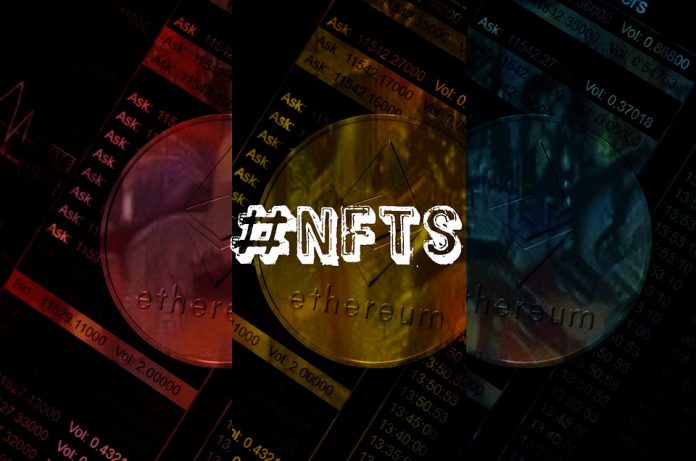This article is written by Gaurav Dhingra. This article has been edited by Ruchika Mohapatra (Associate, Lawsikho).
This article has been published by Sneha Mahawar.
Table of Contents
Introduction
Non-Fungible Tokens, or NFT, is a one-of-a-kind way of representing an asset as an Ethereum-based asset. Each NFT is distinct and has its own digital signature, which can be created using only a few simple tech skills. It can’t be compared to another NFT, hence it’s non-fungible. Fiat currencies and cryptocurrency, on the other hand, are fungible, meaning that one dollar is always equivalent to another dollar. They are a form of a certificate of authenticity that is encoded as a token on the blockchain and enables the authentication of digital artwork, among other things.
Content creators now have more grip than ever before, thanks to digital contracts on the Ethereum blockchain. NFT projects are built on incorruptible decentralised blockchain-based technology. Digital assets that depict real-world objects include art, music, in-game goods, and films. They are often encoded using the same underlying software as many cryptos and are acquired and sold online, often with bitcoin. Anyone with a computer can make an NFT and post it on the internet, with Open Sea being the largest market.
How web3.0 is creating a new medium for artwork
Whether it’s music, images, GIFs, movies, jpegs, mp3s, or any other file format, it’s a new medium for artwork. Paintings were once drawn on cave walls, then on paper, on Pinterest, and finally on the blockchain. The medium varies while the art remains the same and we’re experiencing one of those changes now in the form of NFT. As we saw with the shift from web 2.0 to web 3.0, previous mediums are becoming obsolete and being replaced by new ones, thus, one must adapt to this “wild, wild, web” medium as soon as feasible.
Currently, NFT only authenticates a small percentage of digital art—digital images that live and circulate on the internet. However, there is a growing trend among artists and gallerists to use NFTs to sell stills or short clips from more complex, frequently generative, and interactive digital artworks, which can be acquired for less money than the shortened images sold as NFTs. Consumers are also using NFTs to track the authenticity of the brands. That’s why Brands like Louis Vuitton, Prada, Cartier, and Tiffany have just begun to use the AURA blockchain to allow customers to use NFTs to track the validity of their branded luxury items. This shift in the medium is a technological milestone with far-reaching cultural and legal ramifications.
Recent highlights
Nike sued online sneaker reseller StockX in the NY Federal Court on February 3, 2022 for illegally selling pictures of Nike shoes, making it the latest case involving non-fungible tokens. StockX’s NFTs, according to Nike, infringe on its trademarks and therefore are likely to mislead consumers. Its complaint sought specific monetary damages as well as a halt to its sales. Multinational corporations have been using various NFT creators around the world for infringement of their intellectual property rights, though such cases have not yet reached Indian courts.
What IP issues is it causing
New questions about the NFT’s use have arisen as it has been established in mainstream culture and ushering in a new era of technological innovation in the arts. Apart from society’s awareness of IP usage, there has been a great deal of ignorance. For instance, how can one prohibit others from generating comparable NFTs of their work, in whole or in part, or how merely purchasing the NFT does not grant the purchaser the right to utilise the art to develop and sell items other than the NFT?
Furthermore, following a notice and takedown, the listing for an NFT will be removed from the marketplace, but the NFT will remain live on the blockchain, creating irreversible harm to the author’s moral rights, violating the Doctrine of Fair Deal.
As their applications expanded into the realms of art and creativity, the ambitions for NFTs outweighed concerns about legal ramifications. If intellectual property law is not properly considered, NFTs become a problem for both creators and customers.
Position of law on NFTs
The legal position on NFT in India is quite unclear, but one can try to ascertain the likely position of the courts based on precedents and current legislation.
Trademark law
A trademark is a sort of intellectual property that consists of a recognisable sign, design, or expression that identifies and distinguishes products or services from other sources which can be found on packaging, a label, a voucher, or on the product itself.
The trademark law violation in web3.0 can be traced back to the legal position on web2.0, i.e. the similarity between the domain name and NFT. Cybersquatting, or when third parties register someone else’s trademark, business name, or trade name as a domain name, is the most common source of domain name disputes.
In such cases, there is no need for previous approval from any authority regarding the proprietary rights to the trade name because domain names are registered on a first-come, first-served basis. That is, anyone can register a domain name without proving trademark or name ownership.
Cybersquatters exploited this rule in the domain name registration system to register trademarks, business names, and trade names without actually owning the trademarks or names. As the owners of said domain names, cybersquatters deal in the sale and use of said names or use them to divert internet traffic and earn money through pay-per-click sponsored advertisements.
In India, domain names are protected as trademarks under the Trademarks Act of 1999. Section 29 of the said Act punishes anyone who violates a domain name registered under a legitimate proclamation.
In Celador Productions Ltd. v. Gaurav Mehrotra, the defendant utilised a name on its website, crorepatrikaun.com, that was similar to the plaintiff’s game show name, KAUN BANEGA CROREPATI. When everything was equivalent to someone else’s original offering, the court found that “a domain name is more than a web address; it gives information about the owner’s goods and services, and so the owner can seek domain protection.”
Similarly, creating NFT, which violates the trademark of another person, will invite a lawsuit under Section 29, Trade Marks Act, 1999. In a recent case involving French luxury brand Hermès, which sued an artist for producing NFT of knock-off handbags, the company became the first big brand to take legal action over the usage of trademarks in the metaverse. Hermès first sent the creator a cease and desist letter, accusing him of being a digital speculator out for becoming quick rich. After receiving no response from the creator, Hermès filed a lawsuit alleging trademark infringement with his MetaBirkins NFTs—virtual recreations of the iconic Hermès handbag. In addition to damages, the firm is asking for an injunction against the creator’s NFTs, the destruction of all previously minted samples, and the transfer of the project’s website name to Hermès.
Hence, If you are creating NFTs, you should avoid using any trademarks of another company that is embodied within your NFT as a best practice.
Patent law
A patent is a statutory right granted by the government to the patentee for a period of 20 years from the date of filing for an invention, governed by the Patents Act, 1970 and the Patents Rules, 2003, in exchange for full disclosure of his invention and the prohibition of others from making, using, selling, or importing the patented product or process for producing that product for those purposes without his consent.
Patents for NFTs are currently available, and more are undoubtedly on the way. For example, Nike has received a patent for “creating cryptographic digital assets for footwear,” which would allow a shoe customers to guarantee that their purchase is genuine while also having a digital collectible version of their shoe in their wallet. In general, the number of blockchain patents continues to rise.
A patentable innovation in India must be patentable, new or unique, useful, and not obvious. Furthermore, it must not fall into one of the non-patentable categories listed in sections 3 and 4 of the Act.
Because NFT is both an art and a computer programme, it is difficult to understand the position of patent law on NFTs. Furthermore, the statute expressly states that a software or computer programme as such is not patentable in India. More specifically, Section 3 of the Patents Act of 1970 states that “a mathematical or business method or a computer programme per se or algorithms” are not inventions and thus not patentable. So, for the time being, one must await an official notification or legislation from the government in order to understand its legality.
Copyright law
A copyright is a type of intellectual property that grants its owner the exclusive right to duplicate and distribute a creative work in any format, including literary, artistic, educational, and musical. The author owns exclusive rights to the artwork as soon as it is made, and the Copyright starts existing as soon as it is created as per Section 17, Copyright Act, 1957.
Moral rights
Moral rights are personal rights that connect the creator of a work to their work. Moral rights are about being properly named or credited when your work is used, and the way your work is treated and shown.
Through his moral rights, the author has the right to preserve, protect, and nurture his creations. Section 57 of the Copyright Act of 1957 safeguards the author’s right of paternity as well as the author’s right of integrity. Distortion, mutilation, or modification that is proven to be detrimental to the author’s reputation or honour is actionable.
In the Amar Nath Sehgal Mural case, the Delhi High Court made the following observation: In the material world, laws are designed to protect the right to just compensation. But there is more to life than meets the eye. Many of us believe in the existence of the soul. The author’s moral rights are the soul of his works. Through his moral rights, the author has the right to preserve, protect, and nurture his creations.
Larva Labs, the creator of CryptoPunks, adopted the NFT licence in 2019, which would grant non-commercial use, excluding merchandise revenue of $100,000, but would not allow NFT holders to alter the image. As a result, a digital artist can be sued for destroying the integrity of the author’s artwork in its NFT. Even after purchasing an NFT, distorting it to the point where the sanctity and originality of the work is lost may result in a lawsuit from the creator.
Author rights and first sale doctrine
The vast majority of purchasers believe they will be able to use NFT to create prints, t-shirts, and other goods. However, the author owns the exclusive rights to the artwork as soon as it is created, unless prohibited by an explicit contract waiving author’s rights. If there is no indication that rights have been sold, they remain with the artist and must be commercially exploited.
A commercial licence agreement must be obtained from the creator, as the holders only have the right to hold and sell the token, not the copyright to what it points to – unless otherwise agreed upon in advance.
A similar analogy can be drawn w.r.t to NFT-When an artist sells a physical painting to a buyer, the artist is, by default, the copyright holder and will retain the original copyright in the work, even after the artwork is sold to a buyer, unless there is some exception to the general rule. The buyer owns both the physical copy and the right to display it. The buyer, on the other hand, does not have the right to make new copies; that right belongs to the owner of the copyright. In contrast, the buyer is free to resell his physical copy to a third party without violating any copyright restrictions.
That’s why Yuga Labs, the company behind The Bored Ape Yacht Club, issued a statement stating that holders own “the underlying Bored Ape, the Art, totally.” So long as you can show that you possess the NFT, Yuga Labs provides you “an unlimited, worldwide licence to use, duplicate, and exhibit the acquired Art for the purpose of making derivative works based upon the Art,” such as T-shirts.
As a result, minting an NFT constitutes an infringement of copyright unless it is done by the copyright owner (or someone with their agreement). Additional infringements would almost certainly be involved in the promotion and selling of that NFT.
In case of copyright infringement, one can send a Takedown notice under the Digital Millennium Copyright Act, 1988 to OpenSea regarding the breach. Recently, Larva Labs has filed an infringement claim against PolygonPunks, a copycat project on the Polygon “Layer 2” sidechain. However, more decentralised platforms may not have appropriate avenues to make formal IP complaints.
Conclusion
If NFTs are to realise their full potential as a new vehicle for constructing and exchanging the inherent value of creative works, the worlds of NFTs, Copyright, patent, and trademark law must begin to collaborate. Meanwhile, artists and businesses interested in participating in these markets should exercise caution and, as always, be aware of the risks associated with intellectual property rights. The repercussions of NFT copyright infringement, NFT trademark infringement, or NFT patent infringement in case of India are unknown.
Despite the platforms addressing IP issues, it appears that courts will need to step in at some point to settle many of the existing IP disputes in the space. However, issues ranging from proper jurisdiction to simply identifying the responsible party will pose challenges to the legal claims.
Furthermore, because the process of minting NFT is irreversible, there is a significant need for validating and verifying copyright ownership in order to gather evidence that serves as a proof that the person minting the NFT has the necessary permissions to do so, to the extent that you can identify an individual company or individual who is infringing your intellectual property. Pursuing random copycats who are plagiarising your intellectual property within the NFT, on the other hand, maybe extremely difficult, impossible, or simply not cost-effective.
When people’s acts are decentralised, pseudonymous, and international, there are possible constraints to suing them for actions committed and recorded on the blockchain. NFTs offer an exciting new way to communicate with and find new followers in a new market, while also potentially making money. As an artist or brand owner, you must be aware that you are putting your intellectual property at danger, with unforeseeable and unpredictable consequences.
Additionally, instead of establishing NFTs themselves, artists or brands may choose to licence their brands. The National Basketball Association, for example, licensed the NBA brand and content to Dapper Labs in order for NBA Top Shot to be created. Consider this: If you’re a die-hard cricket fan, and you get an NFT of MS Dhoni’s World Cup helicopter shot, you’ll have a verifiable hit on your hands, and you’ll be able to barely keep up with customer demand. It will be interesting to see how legislation evolves with respect to NFT.
Students of Lawsikho courses regularly produce writing assignments and work on practical exercises as a part of their coursework and develop themselves in real-life practical skills.
LawSikho has created a telegram group for exchanging legal knowledge, referrals, and various opportunities. You can click on this link and join:
Follow us on Instagram and subscribe to our YouTube channel for more amazing legal content.
 Serato DJ Crack 2025Serato DJ PRO Crack
Serato DJ Crack 2025Serato DJ PRO Crack










 Allow notifications
Allow notifications



